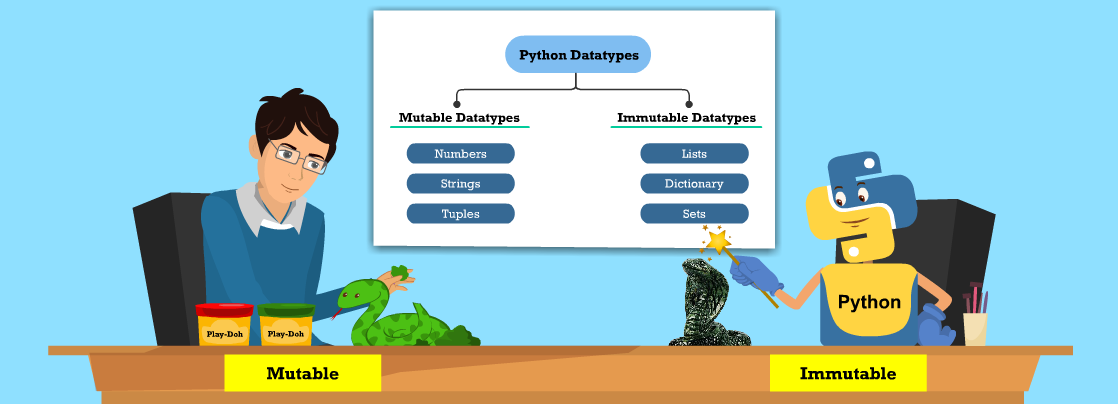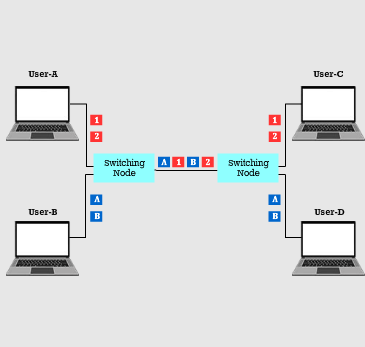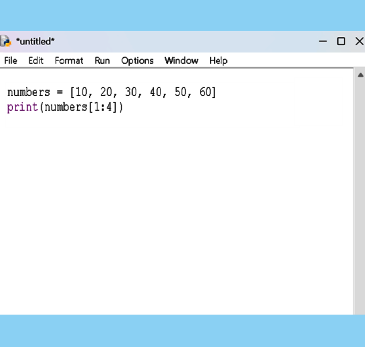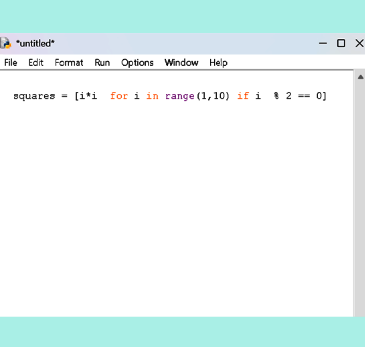
Mutable and Immutable Types in Python
Understanding the difference between mutable and immutable data types in Python is essential for writing efficient programs. Some variables can be modified after creation, while others remain unchanged. Understanding mutable and immutable variables is crucial for writing efficient and error-free code.
What are Mutable and Immutable Types?
In Python, data types are classified into two categories. They are;
- Mutable types – Values can be changed after assignment.
- Immutable types – Values cannot be changed after assignment.
Examples of Mutable and Immutable Types
Mutable Data Types
- List – Allows modification of elements.
- Dictionary – Supports adding, updating, and deleting key-value pairs.
- Set – Enables dynamic addition and removal of elements.
Immutable Data Types
- Tuple – Once created, elements cannot be modified.
- String – Any modification results in a new string being created.
- Integer, Float, Boolean – Changing values creates a new object in memory.
Demonstrating Mutable and Immutable Types
Consider the following Python program.
# Mutable: List
grocery_list = ["Milk", "Eggs", "Bread"]
grocery_list[1] = "Butter" # Modifying an element
print(grocery_list) # Output: ['Milk', 'Butter', 'Bread']
# Immutable: Tuple
coordinates = (10, 20, 30)
coordinates[1] = 40 # Attempting to modify a tuple
The first example modifies a list, as lists are mutable. The second example raises an error because tuples are immutable.
Advantages of Mutable and Immutable Types
Advantages of Mutable Types
- Flexible – Values can be modified when needed.
- Memory Efficient – Updates happen in place without creating new objects.
- Useful for Dynamic Data – Ideal for lists and dictionaries that require frequent modifications.
Advantages of Immutable Types
- Data Security – Prevents accidental modifications.
- Optimised Performance – Python handles immutable types more efficiently.
- Useful in Hashing – Tuples can be used as dictionary keys, unlike lists.
Disadvantages of Mutable and Immutable Types
Disadvantages of Mutable Types
- Prone to Unintended Changes – Modifications may occur accidentally.
- Not Hashable – Cannot be used as dictionary keys.
Disadvantages of Immutable Types
- Less Flexible – New objects must be created for any modifications.
- Higher Memory Usage – Multiple versions of the same data may exist in memory.
Conclusion
Choosing between mutable and immutable types depends on the use case. Mutable types are ideal for data that requires frequent updates, while immutable types ensure security and efficiency. Understanding these concepts helps in writing reliable Python programs.







